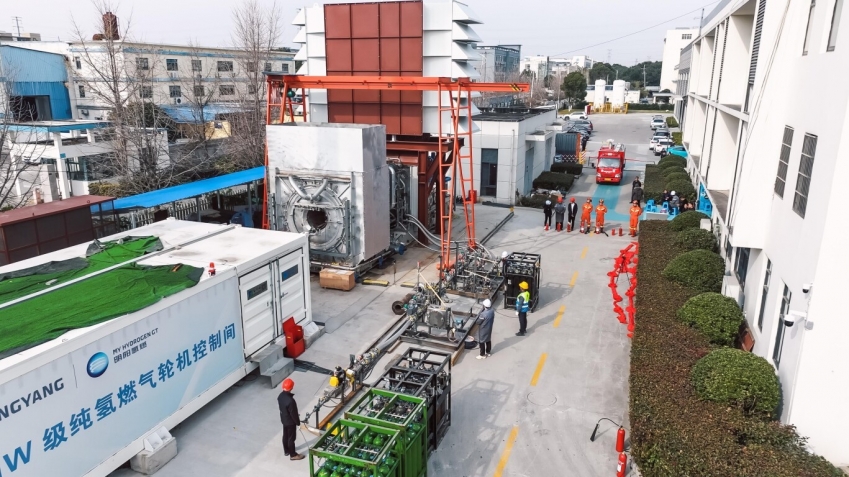A Chinese new energy equipment firm has announced the successful ignition of the world's first 30MW-class pure hydrogen gas turbine, offering a key solution for renewable energy storage and utilization.

The gas turbine Jupiter I is the world's largest single-unit power pure hydrogen generator, capable of converting hydrogen from storage tanks back into electricity during peak demand periods, according to the Mingyang Group.
One challenge with renewable energy is the substantial waste that occurs during off-peak hours. Converting excess electricity into hydrogen for storage and then back to electricity at peak times is a viable solution.
"Using hydrogen for power generation achieves a carbon-free process, known as power-to-hydrogen-back-to-power," said Wang Yongzhi, general manager of Mingyang Hydrogen Gas Turbine Technology.
However, he noted that slow and inefficient conversion during peak demand periods can also lead to under-utilization, highlighting the need for high-capacity gas turbines.
The engineering team has successfully manufactured an integrated combustion chamber nozzle using 3D printing, addressing the key technical issues of hydrogen combustion -- flashback, oscillation and high oxynitride emissions.
"The machine can use more than 30,000 cubic meters of hydrogen in an hour, which, when calculated annually, is equivalent to a power generation of 500 million kWh of electricity being stored in hydrogen," said Wang.
Jupiter I can resolve the challenge of electricity wastage in the one-million-kW wind and solar energy projects, overcoming the limitations in hydrogen storage and transportation, according to Wang.
Pure hydrogen gas turbines are crucial for addressing the issue of abandoned electricity from clean energy projects in western China's deserts, Gobi and wastelands, thus enabling large-scale, long-term energy storage.
"The new invention could play a significant role in China's renewable power system and have broad market prospects globally, especially in regions rich in clean energy resources," said Wang.
Renewable energy installations in China account for over 50 percent of the nation's total power generation capacity. The country has pledged to peak its carbon dioxide emissions by 2030 and achieve carbon neutrality by 2060.
Police Registration Number: 44200002442868
Website ID: 4420000052
Sponsored by: Office of Zhongshan Municipal People's Government
Technical Support: Information Center of Zhongshan
Without written authorization from Zhongshan Municipal People’s Government, the content of the site shall not be republished or used in any form.
About Us | Site Map| Privacy Statement| Contact us
